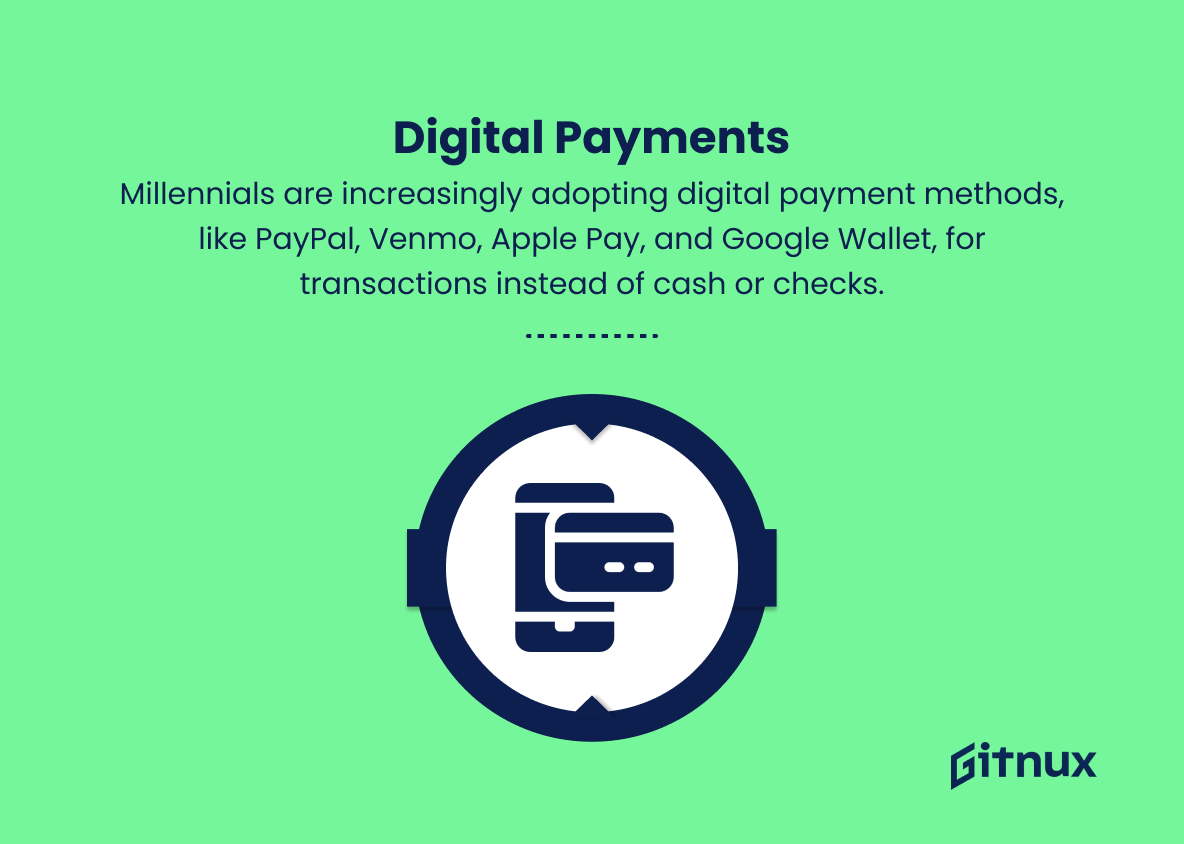As the millennial generation continues to make up a significant portion of the global workforce and consumer market, it is essential to understand and adapt to their ever-evolving banking behavior and preferences.
In this in-depth blog post, we will explore the key millennial banking trends that financial institutions need to acknowledge, including their expectations for mobile banking, a shift towards sustainable and ethical investments, and the demand for personalized financial experiences. Staying abreast of these trends will not only allow banks to engage and retain their millennial clients but also foster innovation and growth in the ever-changing financial landscape.
Top Millennial Banking Trends
1. Mobile banking
Millennials are avid users of mobile banking apps, which provide them the flexibility and convenience to manage their finances anywhere, anytime. They are also more likely to switch banks if their mobile app isn’t up to their expectations.
2. Digital payments
Millennials are increasingly adopting digital payment methods, like PayPal, Venmo, Apple Pay, and Google Wallet, for transactions instead of cash or checks.
3. Cryptocurrencies
Many millennials are showing interest in cryptocurrencies and digital assets like Bitcoin, Ethereum, and others. They see them as alternative investments and methods of payment.
4. Online-only banks
Millennials are drawn towards online-only banks, which offer lower fees, higher interest rates, and a digital-first experience compared to traditional banks.
5. Financial wellness tools
Millennials value financial wellness tools that help them a budget, save, invest, and manage their finances. These include budgeting apps like Mint, savings apps like Acorns, and robo-advisors like Betterment.
6. Socially responsible investing
Often-mission-driven millennials look for investment opportunities that align with their values, such as ESG (Environmental, Social & Governance) funds, socially responsible investing, and impact investing opportunities.
7. P2P Lending
Millennials are exploring peer-to-peer lending platforms to diversify their investment portfolios, earn potentially higher returns, and support small businesses or individuals in need.
8. Subscription-based banking
Some millennials prefer subscription-based banking models that offer a bundle of service offerings, such as unlimited ATM reimbursements, higher interest rates, and lower fees, in exchange for a monthly or annual fee.
9. Financial Education
Millennials care about financial literacy and seek out educational resources to help them make informed decisions about their money. Banks can support this trend by providing educational content and financial planning tools.
10. Seamless integration
Millennials appreciate when banks can seamlessly integrate with the other financial apps and services they use, making it easier for them to manage their finances in one place.
11. Multi-channel customer support
Millennials prefer banks that offer various channels of customer support, including chatbots, social media, and 24/7 customer service through mobile apps.
12. Personalized banking experiences
Millennials increasingly seek personalized products and services that cater to their specific financial needs and preferences, including targeted offers, tailored interest rates, and customized budgeting tools.
13. Voice-activated banking
As voice technology becomes more popular, millennials are open to using voice-activated banking services to conduct transactions, check account balances, and perform other financial tasks.
14. Augmented reality (AR) and virtual reality (VR)
Millennials are early adopters of AR and VR technologies, and banks can capitalize on this trend by offering immersive and engaging banking experiences, such as virtual branches, financial planning simulations, and more.
15. Biometric authentication
Millennials appreciate the convenience and security offered by biometric authentication methods, such as fingerprint scans, facial recognition, and voice authentication, as opposed to traditional passwords and PINs.
Implications
Millennial banking trends, including mobile banking, digital payments, cryptocurrencies, online-only banks, financial wellness tools, socially responsible investing, P2P lending, subscription-based banking, financial education, seamless integration, multi-channel customer support, personalized banking experiences, voice-activated banking, augmented and virtual reality, and biometric authentication, are poised to transform the financial landscape dramatically. These trends emphasize the priority millennials place on convenience, transparency, and personalization in their banking experiences.
The proliferation of digital technologies, particularly mobile apps, and online platforms, facilitates seamless interactions, leading to a shift towards a digital-first approach in banking. As banks adapt to this evolving landscape, they must prioritize offering innovative, user-friendly experiences and diverse customer support channels to cater to this generation’s preferences. Emphasizing financial education, ethical investing, and advanced technologies such as AR, VR, and biometric authentication can further help banks differentiate themselves and stay ahead in a market increasingly defined by evolving millennial preferences.
Conclusion
In summary, Millennial Banking Trends show a clear shift towards digitalization, financial literacy, and personalized experiences. This generation demands convenience, transparency, and user-friendly platforms in their banking interactions. Moreover, Millennials are increasingly prioritizing socially responsible investments, making sustainability and ethical practices a focal point for financial institutions.
As the influence of this generation continues to grow, it is crucial for banks to adapt and cater to these preferences, understanding that the future of banking is inextricably tied to satisfying the needs and expectations of Millennials. Fostering innovation, embracing technology, and championing responsible and inclusive finance will not only attract this demographic but also solidify a financial institution’s position as a forward-thinking and relevant partner in today’s ever-evolving financial landscape.















